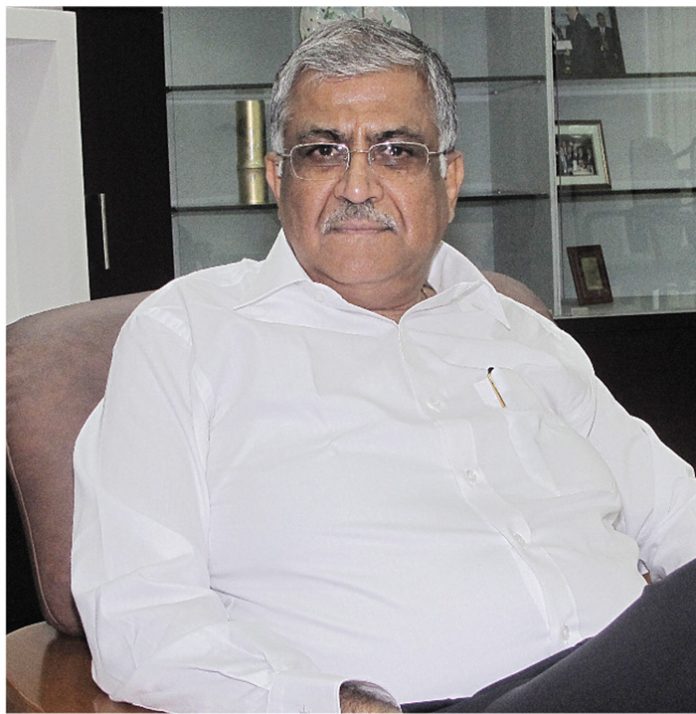One of the late entrants to the ink industry in India, in 1998 Sakata brought some new environment-friendly products and technologies focussing on higher quality segments. Addressing the productivity concerns at the customer’s end, newer and more contemporary products and technologies prevalent in countries like Japan were introduced along with cost-effective solutions. Sakata is one of the few suppliers today that offer inks for applications and machines that are expected to run at top speeds.
Sakata’s product range includes solvent-based and water-based flexographic and gravure inks, news inks, offset inks, UV inks, water-based and UV var- nishes, metal decorating inks and digital inks and toners. The Sakata Inx R&D centres in Japan, USA and India work on new technologies, raw materials to
provide tailor-made products, and other changing needs of the market.
Sakata India has two manufacturing plants in India — a 30,000 square metre unit in Bhiwadi near Delhi in Rajasthan and a 80,000 square metre plant at Pano- li in Gujarat. These mainly produce gravure, flexo and offset inks and are certified to international environment and food safety standards — ISO 9001: 2000, ISO 14001: 2004 and OHSAS 18001:1999. At Panoli all types of inks — gravure, offset, and others like digital that are not being manufactured in Bhiwadi currently are being produced. The new plant is much safer in terms of infrastructure and Saka- ta has tried to incorporate all its experiences and learnings from previous plants. However, new developments are taking place in both the plants.
Sakata India is developing its business with the neighbouring countries such as Nepal, Bangladesh and Sri Lanka. Middle East and Africa are also growing mar- kets for the company as are some East European countries. In India, Sakata is the supplier to brands such as Coke, Pepsi, Nestle, Smithkline Beecham, Cadbury, Bri- tannia and Procter & Gamble. The company has been achieving more than 20% year-on-year growth for the last few years but this year due to the downturn of the economy, growth has decreased to 15%. “Consumption of inks is associated with the purchasing power and the GDP of the nation,” VK Seth, managing director of Sakata Inx India tells us.
Sustainable ink systems
The increasing environmental and sustainability awareness among converters and demand from the leading snack and food product companies is motivating the gravure industry to move to the next generation of ink systems with better en- vironmental and food safety standards. Sakata has begun manufacturing in its In- dian plants and successfully launched its toluene and methyl ethyl ketone (MEK) free Bellecolor ink system. The use of ‘system’ implies that components such as hardeners and anti-blocking agents are available for mixing for particular condi- tions such as retort and boil-in-bag packaging. Soya-based inks have been intro- duced and favourably received.
The Lamiall ink system consists of extremely low solvent retention and low- odour inks that are suitable for printing and reverse printing on gravure presses at speeds from 60 to 300 metres a minute for all food grade applications. Using only approved inputs these inks are suitable for food packaging and with the addition of Lamiall hardener they are suitable for retort and boil in bags as well. The Lami- all inks conform to international standards and specifications and are stable with good reusability features.
The solvent system uses ester and alcohol-based solvents with the normal reducer using ethyl-acetate 50%, NPAc 30% and IPA 20%. The retarder uses a max-
imum of 5% methoxy propyl acetate. Bellecolor supplied from Sakata India’s Bhi- wadi plant is being widely used in the United Arab Emirates. With competitive pricing and successful trials by leading Indian gravure printers and converters an- other step forward in environment and food safety practices is both compelling and imminent. “Amongst various other steps, green and safe printing start with inks and Sakata Inx is a major stakeholder in promoting environment-friendly printing,” Seth tells us.
Sakata has a substantial and major share in gravure in the top quality segment which is the food grain segment and that addresses exports from India. In terms of laminates that European and American companies would like to outsource, Saka- ta has introduced environment-friendly inks for flexible packaging which are toluene and MEK free and are equivalent to those found anywhere in the world. It is a market leader in India in these segments.
Sheetfed and coldset web-offset
In the sheetfed segments Seth says that Sakata is one of the major players but has limited production capacity at the moment which is prohibiting further growth. In coldset, Sakata has a lot of scope for growth and Seth feels that within the next three to four years it aims to be one of the top three ink suppliers in the country.
Availability of raw materials for resin manufacturing is a major challenge at this moment Seth feels. Retention and training of good manpower is a another chal- lenge because the economy is growing. Ink people may not remain ink people if they get better opportunities in other industries. Upgradation of technology is one other challenge because when consolidation takes place, smaller units may find it difficult to upgrade their technology and the training of people for this eventuality is important.
Nevertheless Seth remains hopeful and optimistic about the Indian market. He says, “The situation in India is peculiar. In some areas, people are favouring electronic media which is mostly in urban centres. However, certain regions still do not have access to basic facilities such as electricity. Needs are different all over the nation. Print is relevant today and will continue to remain extremely relevant
in the future I believe, as far as India is concerned,” Seth concludes.













